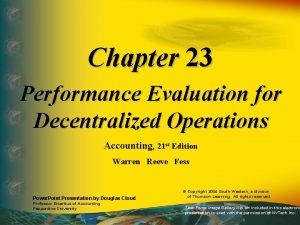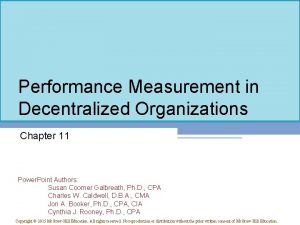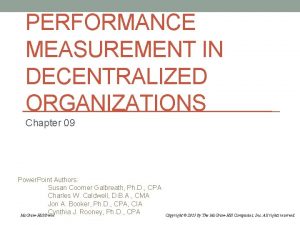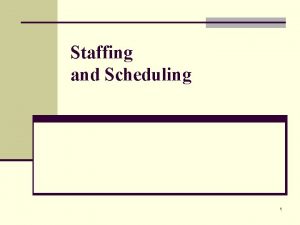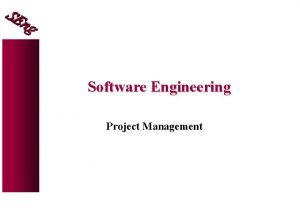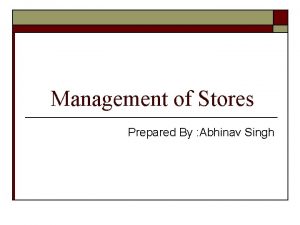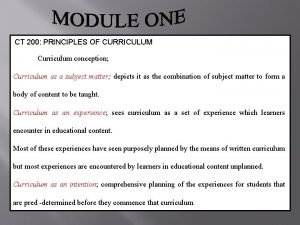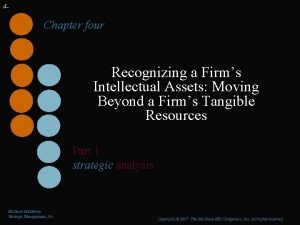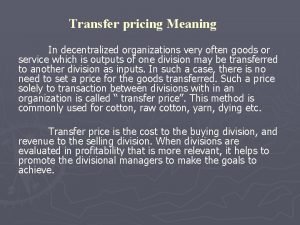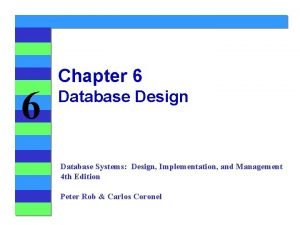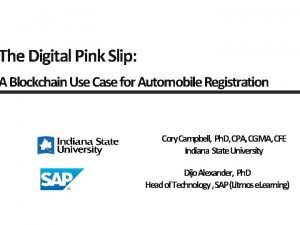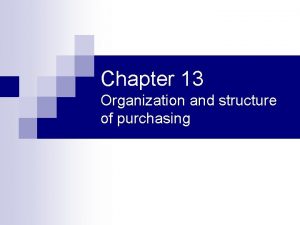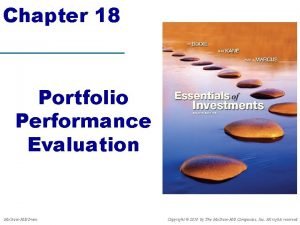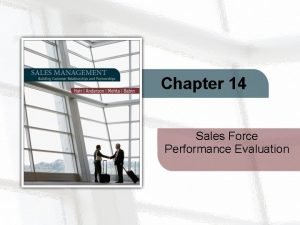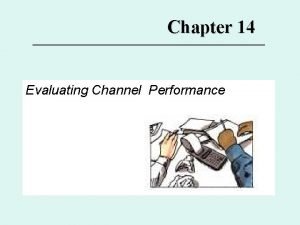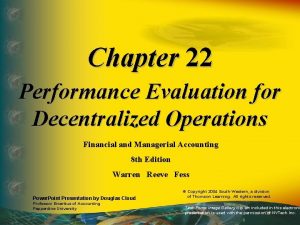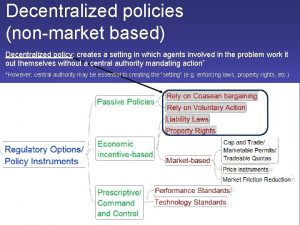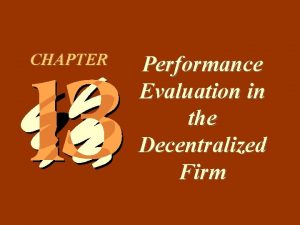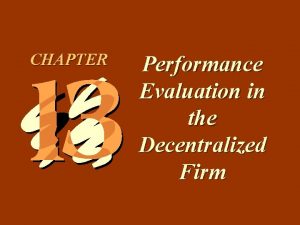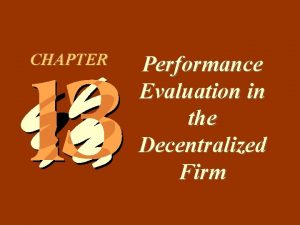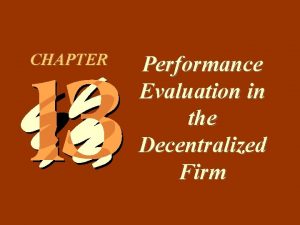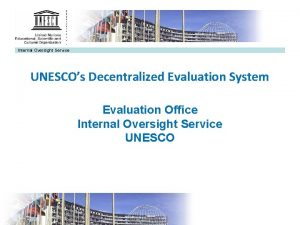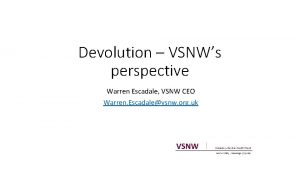CHAPTER 24 Performance Evaluation for Decentralized Operations Warren


























- Slides: 26

CHAPTER 24 Performance Evaluation for Decentralized Operations Warren Reeve Duchac human/i. Stock/360/Getty Images Accounting 26 e

Centralized and Decentralized Operations • • In a centralized company, all major planning and operating decisions are made by top management. In a decentralized company, managers of separate divisions or units are delegated operating responsibility. o The division (unit) managers are responsible for planning and controlling the operations of their divisions, which are often structured around products, customers, or regions. © 2016 Cengage Learning. All Rights Reserved. May not be scanned, copied or duplicated, or posted to a publicly accessible website, in whole or in part.

Advantages and Disadvantages of Decentralized Operations © 2016 Cengage Learning. All Rights Reserved. May not be scanned, copied or duplicated, or posted to a publicly accessible website, in whole or in part.

Responsibility Accounting • In a decentralized business, accounting assists managers in evaluating and controlling their areas of responsibility, called responsibility centers. o o Responsibility accounting is the process of measuring and reporting operating data by responsibility center. Three types of responsibility centers are as follows: § Cost centers, which have responsibility over costs § Profit centers, which have responsibility over revenues and costs § Investment centers, which have responsibility over revenues, costs, and investment in assets © 2016 Cengage Learning. All Rights Reserved. May not be scanned, copied or duplicated, or posted to a publicly accessible website, in whole or in part.

Responsibility Accounting for Cost Centers • A cost center manager has responsibility for controlling costs. o o However, a cost center manager does not make decisions concerned sales or the amount of fixed assets invested in the center. Cost centers may vary in size from a small department to an entire manufacturing plant. Cost centers may exist within other cost centers. Responsibility accounting for cost centers focuses on the controlling and reporting of costs. Budget performance reports that report budgeted and actual costs are normally prepared for each cost center. © 2016 Cengage Learning. All Rights Reserved. May not be scanned, copied or duplicated, or posted to a publicly accessible website, in whole or in part.

Responsibility Accounting for Profit Centers (slide 1 of 2) • A profit center manager has the responsibility and authority for making decisions that affect both revenues and costs and, thus, profits. o o o Profit centers may be divisions, departments, or products. The manager does not make decisions concerned the fixed assets invested in the center. Responsibility accounting for profit center focuses on reporting revenues, expenses, and income from operations. © 2016 Cengage Learning. All Rights Reserved. May not be scanned, copied or duplicated, or posted to a publicly accessible website, in whole or in part.

Responsibility Accounting for Profit Centers (slide 2 of 2) • The profit center income statement should include only revenues and expenses that are controlled by the manager. o o Controllable revenues are revenues earned by the profit center. Controllable expenses are costs that can be influenced (controlled) by the decisions of the profit center managers. § The controllable expenses of profit centers include direct operating expenses such as sales salaries and utility expenses. § In addition, a profit center may incur expenses provided by internal centralized service departments. © 2016 Cengage Learning. All Rights Reserved. May not be scanned, copied or duplicated, or posted to a publicly accessible website, in whole or in part.

Service Department Charges (slide 1 of 2) • Service department charges are indirect expenses to a profit center. o • They are similar to the expenses that would be incurred if the profit center purchased the services from outside the company. A profit center manager has control over service department expenses if the manager is free to choose how much service is used. o In such cases, service department charges are allocated to profit centers based on the usage of the service by each profit center. © 2016 Cengage Learning. All Rights Reserved. May not be scanned, copied or duplicated, or posted to a publicly accessible website, in whole or in part.

Service Department Charges (slide 2 of 2) • The rates at which services are charged to each division are called department charge rates. These rates are computed as follows: • The services used by each division are multiplied by the service department charge rates to determine the service charges for each division, computed as follows: © 2016 Cengage Learning. All Rights Reserved. May not be scanned, copied or duplicated, or posted to a publicly accessible website, in whole or in part.

Profit Center Reporting • • In evaluating the profit center manager, the income from operations should be compared over time to a budget. However, it should not be compared across profit centers, because the profit centers are usually different in terms of size, products, and customers. © 2016 Cengage Learning. All Rights Reserved. May not be scanned, copied or duplicated, or posted to a publicly accessible website, in whole or in part.

Responsibility Accounting for Investment Centers (slide 1 of 2) • • An investment center manager has the responsibility and the authority to make decisions that affect not only costs and revenues but also the assets invested in the center. Investment centers are often used in diversified companies by divisions. o In such cases, the divisional manager has authority similar to that of a chief operating officer or president of a company. © 2016 Cengage Learning. All Rights Reserved. May not be scanned, copied or duplicated, or posted to a publicly accessible website, in whole or in part.

Responsibility Accounting for Investment Centers (slide 2 of 2) • • Because investment center managers have responsibility for revenues and expenses, income from operations is part of investment center reporting. In addition, because the manager has responsibility for the assets invested in the center, the following two additional measures of performance are used: o o Rate of return on investment Residual income © 2016 Cengage Learning. All Rights Reserved. May not be scanned, copied or duplicated, or posted to a publicly accessible website, in whole or in part.

Rate of Return on Investment (slide 1 of 5) • • • Because investment center managers control the amount of assets invested in their centers, they should be evaluated on the use of these assets. One measure that considers the amount of assets invested in an investment center is the rate of return on investment (ROI) or rate of return on assets. The rate of return on investment (ROI) is computed as follows: © 2016 Cengage Learning. All Rights Reserved. May not be scanned, copied or duplicated, or posted to a publicly accessible website, in whole or in part.

Rate of Return on Investment (slide 2 of 5) • • The rate of return on investment is useful because three factors subject to control by divisional managers (revenues, expenses, and invested assets) are considered. The higher the rate of return on investment, the better the division is using its assets to generate income. In effect, the rate of return on investment measures the income (return) on each dollar invested. As a result, the rate of return on investment can be used as a common basis for comparing © 2016 Cengage Learning. All Rights Reserved. May not be scanned, copied or duplicated, or posted to a publicly accessible website, in whole or in part.

Rate of Return on Investment (slide 3 of 5) • • To analyze differences in the rate of investment across divisions, the Du. Pont formula for the rate of return on investment is often used. The Du. Pont formula views the rate of return on investment as the product of the following two factors: o o Profit margin, which is the ratio of income from operations to sales. Investment turnover, which is the ratio of sales to invested assets. © 2016 Cengage Learning. All Rights Reserved. May not be scanned, copied or duplicated, or posted to a publicly accessible website, in whole or in part.

Rate of Return on Investment (slide 4 of 5) • Using the Du. Pont formula, the rate of return on investment is expressed as follows: • The Du. Pont formula is useful in evaluating divisions. o This is because the profit margin and the investment turnover reflect the following underlying operating relationships of each division: § Profit margin indicates operating profitability by computing the rate of profit earned on each sales dollar. § Investment turnover indicates operating efficiency by computing the number of sales dollars generated by each © 2016 Cengage Learning. All Rights Reserved. May not be scanned, copied or duplicated, or posted to a publicly accessible website, in whole or in part. dollar of invested assets.

Rate of Return on Investment (slide 5 of 5) • A disadvantage of the rate of return on investment as a performance measure is that it may lead divisional managers to reject new investments that could be profitable for the company as a whole. © 2016 Cengage Learning. All Rights Reserved. May not be scanned, copied or duplicated, or posted to a publicly accessible website, in whole or in part.

Residual Income • • Residual income is useful in overcoming some of the disadvantages of the rate of return on investment. Residual income is the excess of income from operations over a minimum acceptable income from operations. o • The minimum acceptable income from operations is computed by multiplying the company minimum rate of return by the invested assets. The major advantage of residual income as a performance measure is that it considers both the minimum acceptable rate of return, invested assets, and the income from operations for each © 2016 Cengage Learning. All Rights Reserved. May not be scanned, copied or duplicated, or posted to a publicly accessible website, in whole or in part.

The Balanced Scorecard • The balanced scorecard is a set of multiple performance measures for a company. o In addition to financial performance, a balanced scorecard normally includes performance measures for the following: § Customer service § Innovation and learning § Internal processes • The balanced scorecard attempts to identify the underlying nonfinancial drivers, or causes, of financial performance related to innovation and learning, customer service, and internal processes. © 2016 Cengage Learning. All Rights Reserved. May not be scanned, copied or duplicated, or posted to a publicly accessible website, in whole or in part.

Balanced Scorecard Performance Measures © 2016 Cengage Learning. All Rights Reserved. May not be scanned, copied or duplicated, or posted to a publicly accessible website, in whole or in part.

Transfer Pricing • • When divisions transfer products or render services to each other, a transfer price is used to charge for the products or services. Because transfer prices will affect a division’s financial performance, setting a transfer price is a sensitive matter for the managers of both the selling and buying divisions. The objective of setting a transfer price is to motivate managers to behave in a manner that will increase the overall company income. Transfer prices can be set as low as the variable cost per unit or as high as the market price. Often, transfer prices are negotiated at some point between the two. © 2016 Cengage Learning. All Rights Reserved. May not be scanned, copied or duplicated, or posted to a publicly accessible website, in whole or in part.

Market Price Approach • • Using the market price approach, the transfer price is the price at which the product or service transferred could be sold to outside buyers. If an outside market exists for the product or service transferred, the current market price may be a proper transfer price. © 2016 Cengage Learning. All Rights Reserved. May not be scanned, copied or duplicated, or posted to a publicly accessible website, in whole or in part.

Negotiated Price Approach (slide 1 of 2) • • The negotiated price approach allows the managers to agree (negotiate) among themselves on a transfer price. The only constraint is that the transfer price be less than the market price, but greater than the supplying division’s variable costs per unit, as follows: © 2016 Cengage Learning. All Rights Reserved. May not be scanned, copied or duplicated, or posted to a publicly accessible website, in whole or in part.

Negotiated Price Approach (slide 2 of 2) • • • A negotiated price provides each division manager with an incentive to negotiate the transfer of materials. At the same time, the overall company’s income from operations will also increase. However, the negotiated approach only applies when the supplying division has excess capacity. © 2016 Cengage Learning. All Rights Reserved. May not be scanned, copied or duplicated, or posted to a publicly accessible website, in whole or in part.

Cost Price Approach (slide 1 of 2) • • • Under the cost price approach, cost is used to set transfer prices. The cost price approach is most often used when the responsibility centers are organized as cost centers. A variety of costs may be used in this approach, including: o Total product cost per unit § If total product cost per unit is used, direct materials, direct labor, and factory overhead are included in the transfer price. o Variable product cost per unit § If variable product cost per unit is used, the fixed factory overhead cost is excluded from the transfer price. © 2016 Cengage Learning. All Rights Reserved. May not be scanned, copied or duplicated, or posted to a publicly accessible website, in whole or in part.

Cost Price Approach (slide 2 of 2) • Actual costs or standard (budgeted) costs may be used in applying the cost price approach. o If actual costs are used, inefficiencies of the purchasing (supplying) division are transferred to the purchasing division. § Thus, there is little incentive for the producing (supplying) division to control costs. o Most companies use standard costs in the cost price approach. § In this way, differences between actual and standard costs remain with the producing (supplying) division for cost control purposes. © 2016 Cengage Learning. All Rights Reserved. May not be scanned, copied or duplicated, or posted to a publicly accessible website, in whole or in part.
 Performance evaluation for decentralized operations
Performance evaluation for decentralized operations Performance measurement in decentralized organizations
Performance measurement in decentralized organizations Performance measurement in decentralized organizations
Performance measurement in decentralized organizations The non-iid data quagmire of decentralized machine learning
The non-iid data quagmire of decentralized machine learning Staffing and scheduling in nursing management
Staffing and scheduling in nursing management Democratic decentralized in software engineering
Democratic decentralized in software engineering Management of stores
Management of stores Plan plus decentralized planning system
Plan plus decentralized planning system Conception of curriculum
Conception of curriculum Decentralized network
Decentralized network Promo code asdfasdg
Promo code asdfasdg Recognizing a firm's intellectual assets
Recognizing a firm's intellectual assets Zerocash decentralized anonymous payments from bitcoin
Zerocash decentralized anonymous payments from bitcoin Transfer price
Transfer price Astratum
Astratum Decentralized volume this year
Decentralized volume this year Database design life cycle
Database design life cycle Centralized decentralized distributed
Centralized decentralized distributed Pink slip cripto
Pink slip cripto Centralized decentralized distributed
Centralized decentralized distributed Decentralized power system
Decentralized power system Purchasing organization structure
Purchasing organization structure First decentralized digital currency
First decentralized digital currency Computer architecture performance evaluation methods
Computer architecture performance evaluation methods Portfolio performance evaluation problems
Portfolio performance evaluation problems Sales force evaluation
Sales force evaluation Performance evaluation of channel members
Performance evaluation of channel members
